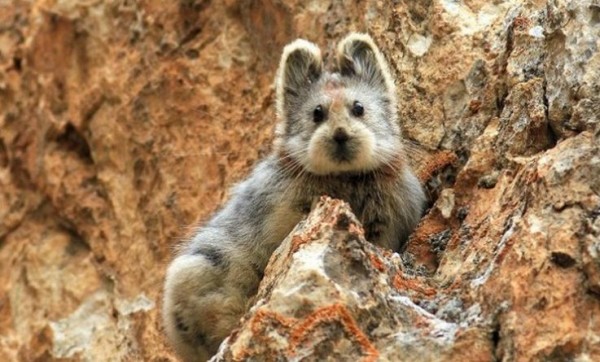Rare and Cute Chinese Ili Pika Seen After 20 Years
| Marco Foronda | | Mar 23, 2015 12:29 PM EDT |
The first photo of an Ili Pika in over 20 years.
National Geographic reported a mammal that's eluded the lenses of researchers across the world for well over two decades was finally photographed late last year.
It was first seen in the Tian Shan Mountains in China where it makes holes and cracks in the cliffs that are its home. Despite other families of pika living across the Northern Hemisphere, these mountains are the only place this Ewok lookalike seems to feel at home.
Like Us on Facebook
Ili Pika (Ochotona iliensis) is a small, mountain-dwelling mammal that looks like a teddy bear. Researchers, however, don't have a clue about the ecology of the animal, its behavior and breeding patterns.
Ili Pika is directly related to rabbits and are quite rare. While researchers know the Ili Pika lives in the Tianshan Mountains in northwestern China, they have been unable to photograph any specimen for the past 20 years -- until last summer, that is.
The animal was discovered in 1983 by accident by scientist Weidong Li, who currently works at the Xinjiang Institute for Ecology and Geography. Since its discovery, only 29 Ili Pika have been spotted. The last time one was photographed was in the mid-1990s.
In the summer of 2014, a team of researchers, including Li, went on an expedition in search of the Ili Pika. An Ili Pika was seen hiding behind a rock as the team was busy setting up camera traps to take a picture of the creature. Li quickly took photos of the rare mammal once again.
Current estimates place the Ili Pika population at fewer than the 2,000 individuals earlier thought to be living in China. Strangely, the Chinese government has not listed the Ili Pika as a creature vulnerable to extinction. It lists the animal only as an endangered species.
In the not too recent past, the government even proposed to exterminate the Ili Pika because it was considered a pest.
In a published study in 2005 in the journal, Oryx, Andrew Smith of Arizona State University and Li Wei-Dong at the Xinjiang Academy of Environmental Protection in Beijing, suggested the animal be added to the endangered species list.
"We recommend that the Ili Pika's Red List status be changed from Vulnerable to Endangered," they wrote in the paper.
Over the last decade, the Ili Pika population has continued to decline by an estimated 55 percent
TagsRare Cute Chinese Ili Pika Comes Out After 20 Years, Ili Pika, Chinese Ili Pika, Rabbit, teddy bear, endangered species
©2015 Chinatopix All rights reserved. Do not reproduce without permission
EDITOR'S PICKS
-

Did the Trump administration just announce plans for a trade war with ‘hostile’ China and Russia?
-

US Senate passes Taiwan travel bill slammed by China
-

As Yan Sihong’s family grieves, here are other Chinese students who went missing abroad. Some have never been found
-

Beijing blasts Western critics who ‘smear China’ with the term sharp power
-

China Envoy Seeks to Defuse Tensions With U.S. as a Trade War Brews
-

Singapore's Deputy PM Provides Bitcoin Vote of Confidence Amid China's Blanket Bans
-

China warns investors over risks in overseas virtual currency trading
-

Chinese government most trustworthy: survey
-

Kashima Antlers On Course For Back-To-Back Titles
MOST POPULAR
LATEST NEWS
Zhou Yongkang: China's Former Security Chief Sentenced to Life in Prison

China's former Chief of the Ministry of Public Security, Zhou Yongkang, has been given a life sentence after he was found guilty of abusing his office, bribery and deliberately ... Full Article
TRENDING STORY

China Pork Prices Expected to Stabilize As The Supplies Recover

Elephone P9000 Smartphone is now on Sale on Amazon India

There's a Big Chance Cliffhangers Won't Still Be Resolved When Grey's Anatomy Season 13 Returns

Supreme Court Ruled on Samsung vs Apple Dispute for Patent Infringement

Microsoft Surface Pro 5 Rumors and Release Date: What is the Latest?










